Today is the last day of 2017 which means it is well into summer at Shibui Bonsai and that means it is time for repotting some of the bonsai.
Last week I gave my Callistemon its annual after flowering prune. This one is Callistemon sieberii – River bottlebrush which flowers later than most Callistemon species, normally Early-mid December here. 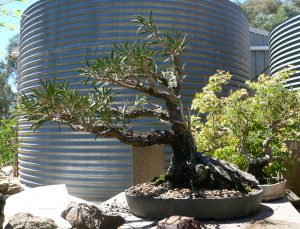
Callistemon flower on the tips of the previous growth which means we need to allow the trees to get a bit unruly if we want to see flowers. After flowers are finished I prune back quite hard which stimulates new buds and more fresh growth which will flower next spring.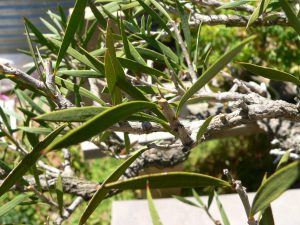
In warmer areas of Australia growers can repot their callistemons any time of year but I’ve found that callistemons generally don’t recover very well if they are root pruned in the cooler months. Late spring is usually an ideal time for repotting most natives but this one is still preparing for flowering then so I’ve been forced to delay repotting until late December. This has proved quite successful and this tree does not seem to suffer any ill effects from a mid summer root prune and repot.
Here is the root ball showing really healthy new roots.
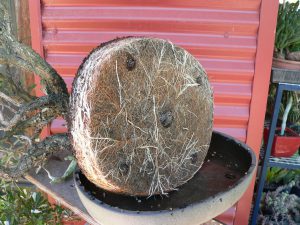
Even though the tree is actively growing there’s no need to be tentative. I cut back the roots as hard as most of my other bonsai, native or exotic. I just use my normal root pruning technique: Use root shears to cut off several centimetres around the perimeter of the root ball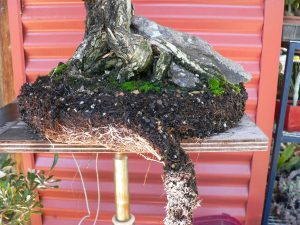
then slice 1-2 cm off the bottom of the root ball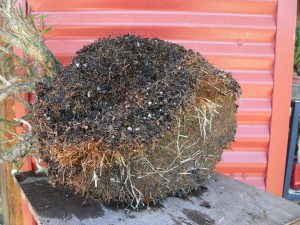
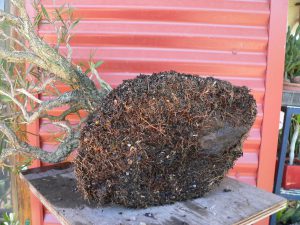
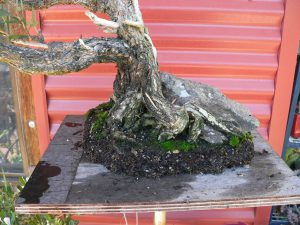
after trimming the roots
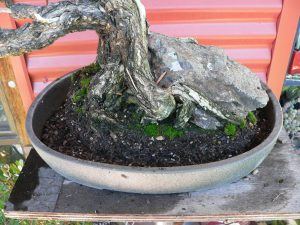
The tree then goes back into the pot with fresh potting mix just like any of my other bonsai. I’ve used my standard potting mix which includes a standard osmocote rather than a special ‘native’ formulation. I’ve found that Callistemons do not need special treatment. they are more than happy with standard high P fertiliser.
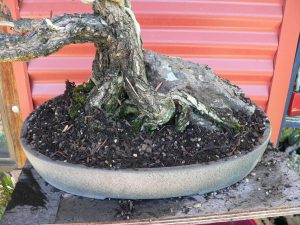 Many bonsai growers routinely wire their bonsai into the pots when repotting. This one has a wide, stable root base as well as a heavy rock in the roots so it will not blow out, even if we were to get unusually strong winds so I don’t bother wiring it into the pot.
Many bonsai growers routinely wire their bonsai into the pots when repotting. This one has a wide, stable root base as well as a heavy rock in the roots so it will not blow out, even if we were to get unusually strong winds so I don’t bother wiring it into the pot.
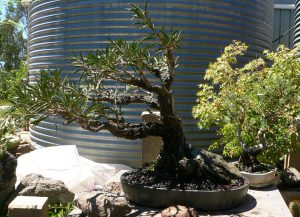 The tree is then watered well and returned to its normal position in the display area which gets full sun for most of the day. In really warm climates I might give it a little extra shade for a week or two but here it does not seem to matter.
The tree is then watered well and returned to its normal position in the display area which gets full sun for most of the day. In really warm climates I might give it a little extra shade for a week or two but here it does not seem to matter.
